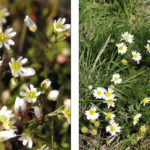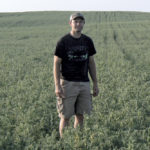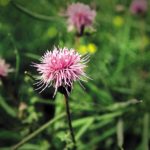They’re also ‘foraging’ for nutrients, deciding where to put their roots, and calling for help when under attack
Reading Time: 3 minutes You might think it’s crazy — but plants talk to each other and act in ways that are similar to animals and humans. “Step away from the idea of plants as factories and start to think of plants as individuals,” biological sciences professor JC Cahill told attendees at the Western Canadian Soil Health and Grazing […] Read more
Listen to your crops — the plants are talking to each other

Perennial sow thistle costs farmers across Alberta
Noxious Weeds: Perennial sow thistle causes yield loss and acts as a host for pests
Reading Time: 2 minutes Often found in high densities across Alberta, perennial sow thistle seems to be a noxious weed that doesn’t quit. Not only does this pest cause significant yield loss in many crops, but it’s a host for several plant pests that attack economically important crops such as alfalfa, winter wheat and canola — just to name […] Read more

A weed that prospers on degraded pasture
Noxious Weeds: Hoary alyssum
Reading Time: 2 minutes Thought to be brought to North America as a seed contaminant from Europe, hoary alyssum is toxic to horses and other livestock. It has a variety of life cycles depending on site and weather conditions, which makes this weed tricky to control. A prohibited noxious weed in Alberta, this pest can be easily identified. Hoary […] Read more

Know your enemy and its destructive potential, says provincial crop specialist
There’s a critical window for controlling weeds, but it depends on both the crop and the threat posed by individual species
Reading Time: 2 minutes All crops have a critical weed control period when they are most susceptible to significant yield loss from weed competition. The critical weed control period for canola is around 17 to 38 days after emergence. Peas can be as early as two weeks after emergence. “Other, more competitive crops, like the cereals, have a less […] Read more

This quick-spreading weed gets an early start
Noxious weeds: Canada thistle
Reading Time: < 1 minute Spring brings lovely native flowers, but also noxious weeds. The aggressive perennial Canada thistle is a favourite of disturbed soils of all types. It starts sending shoots from horizontal roots to the surface of soil around mid-April, with flowers to follow in mid-June and continuing throughout the summer. Easy to distinguish from other weeds, this […] Read more

Plants’ secret chemistry could change the way you farm
Science is discovering plants produce their own pesticides and warn each other of threats — but tillage, spraying, and even breeding can disrupt these defences
Reading Time: 5 minutes A war is being waged in your fields. Every day, your crops are fighting for their lives against insects, diseases, weeds, and weather. And their best line of defence isn’t the chemicals we spray or the traits we breed into them. It’s their sense of smell. “Anything that anybody has ever done to any plant […] Read more

Noxious weed found throughout Alberta
Noxious Weeds: Wooly Burdock
Reading Time: < 1 minute Woolly burdock is found throughout Alberta and will grow in most soil types. It prefers moist, loamy, and well-drained soils which are in direct sunlight. This noxious weed is commonly found on disturbed sites, but has also been found growing in gardens for herbal use. Woolly burdock can only reproduce by seed, but is self-fertile […] Read more

Updated weed guide available
Reading Time: < 1 minute An updated Weed Seedling Guide is now on sale. “The second edition of this convenient, pocket-size booklet helps producers and others correctly identify weed seedlings,” said provincial weed specialist Nicole Kimmel. “Proper identification allows you to take the appropriate measures to deal with weeds.” The $10 coil-bound publication features information on 62 broad-leaved weeds and […] Read more

This toxic hitchhiker is a threat to livestock
Noxious Weeds: Hound's tongue
Reading Time: < 1 minute Hound’s tongue is a weak competitor and doesn’t do well in healthy rangeland — but it compensates for that by being an excellent hitchhiker. This noxious weed produces up to 4,000 seeds per plant, and each one is barbed and easily attaches itself to clothing or fur. It also produces toxic alkaloids that cause irreversible […] Read more

New Swedish machine slices problem weeds down to size
Organic grain growers have been snapping up CombCut machines ‘like crazy’
Reading Time: 3 minutes A new piece of machinery is helping crop growers control broadleaf weeds on their farms — especially on organic operations. “Organic growers are buying these CombCut machines like crazy,” said Steve Shirtliffe, a professor of plant sciences at the University of Saskatchewan. “There’s a real buzz in the organic farming community. I’ve never seen equipment […] Read more

